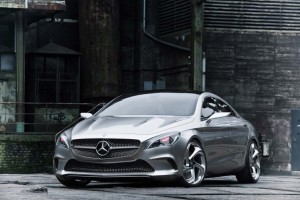Mercedes-Benz is about to deliver a heaping bowl of alphanumeric soup. Once known for just a handful of iconic products like the E-, S- and SL-Class models, the maker has rapidly added offerings to its global line-up in recent years. And while a few of those won’t make it across the Atlantic, a senior executive says U.S. motorists will soon see 11 new product offerings.
That’s on top of the planned update or replacement of 19 other Mercedes products currently in American showrooms, according to Steve Cannon, CEO of Mercedes-Benz USA.
That’s a significantly broader range of new products than the executive had promised just a few months ago and appears to reflect a variety of factors not limited to the overall expansion of the Mercedes global line-up.
“In most cases, our expansion really provides us with an opportunity to talk to a new customer,” Cannon said during an interview with USA Today, adding that Mercedes has a “non-stop cadence” of new models in the pipeline.
Among the all-new models, Mercedes already confirmed plans to introduce the CLA, a smaller version of the popular CLS “coupe-like sedan,” built upon the company’s newly updated A-Class architecture. It will mark the first time any version of the A-Class is sold in the States – and in prior interviews with TheDetroitBureau.com, Cannon and other executives have hinted that additional A-Class variants will follow.
Among updates to existing models, Mercedes is planning significant updates to both the E-Class – its most popular product line – as well as the flagship S-Class. Meanwhile, it is also developing a new convertible version of the big class, a product that will be one of the largest ragtops on the market.
Cannon has repeatedly noted a desire to expand the Mercedes brand’s appeal to a new generation of Millennial buyers. Studies show they are just beginning to achieve the affluence to enter the luxury market and have yet to form strong brand loyalties.
Winning over the next generation could be critical to helping Mercedes hold off the recent surge by rival BMW – which last year became the best-selling luxury brand in the U.S. – as well as come-from-the-back Audi. And after slipping last year in the wake of the Japanese earthquake and tsunami that left it struggling for inventory, Lexus is pushing hard to regain sales and share, as well.
Nonetheless, there are skeptics wondering about the Mercedes plan – even within the automaker’s own ranks. Just a quarter century ago, the German luxury giant’s management angrily debated whether to add the compact C-Class model to reflect shifting consumer tastes and rising fuel prices. Today, it offers a model for seemingly every letter of the alphabet and has had to come up with two and three-letter combinations to cover the additions to its line-up.
“We still have a few letters left,” joked Daimler AG Chairman Dieter Zetsche, who also serves as Mercedes global brand boss, during a conversation with TheDetroitBureau.com earlier this year.
There are some challenges, however. For one thing, Mercedes has to improve both the efficiency of its product development and manufacturing systems to ensure that each of the new models can generate a profit. That’s one reason it has expanded production in lower-cost facilities abroad.
It has also partnered with the Renault-Nissan Alliance to lower development costs and improve economies of scale. The small car platform known as MFA will be used for both the new Mercedes A- and B-Class models as well as for some upcoming products sold by Nissan’s high-line Infiniti brand. Meanwhile, Nissan’s Tennessee engine plant will soon begin supplying engines to the Mercedes plant in Alabama.
Another challenge is to avoid cannibalization. Mercedes needs to lure in buyers from other brands rather than simply spread its current owner base out among a wider range of models. Cannon believes that won’t be a problem.
The maker will also have to find ways to tell consumers about its expanded line-up which could mean a significant increase in its advertising budget. Other makers have had similar challenges over the years, resulting in a launch-and-leave approach, introducing new models then moving on to promote the next big thing. That usually means the older product suffers a sharp fall-off in sales.
The expansion of the Mercedes-Benz line-up is already underway so the results of the strategy will become readily apparent over the next couple years.

